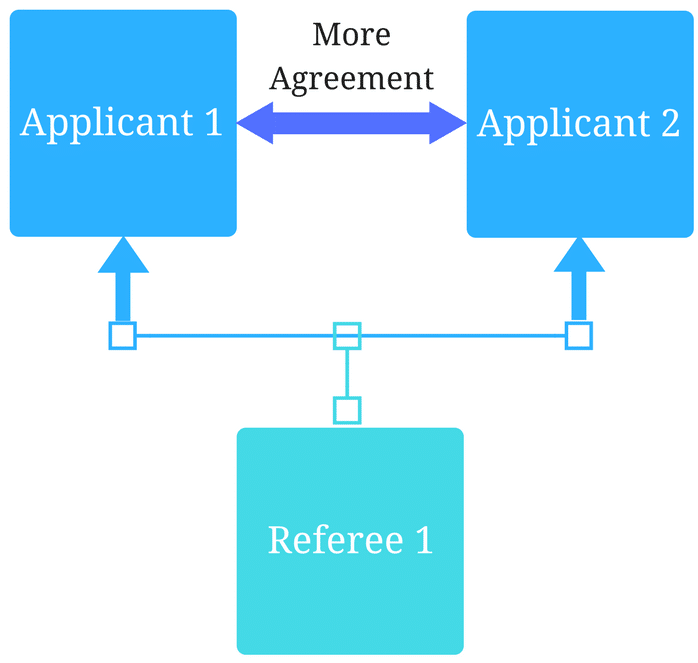Top 5 questions to ask when planning curriculum reform for CBVE

May 3, 2022
Jump to:
- How is the veterinary profession changing?
- How should we define program learning outcomes?
- Does our faculty need additional expertise and resources?
- How can we make the most of accreditation standards for veterinary schools?
- What do we need to use curriculum management data more effectively?
With the shift to competency-based education, health science programs including veterinary science and dentistry are adopting the model to best prepare learners for clinical practice. Veterinary schools, in particular, are guided by the Competency Based Veterinary Education (CBVE) Framework developed by the American Association of Veterinary Medical Colleges (AAVMC).
The CBVE Framework provides veterinary educators a consistent foundation for implementing their curricula, pulling focus on 32 core competencies across the domains of Clinical Reasoning and Decision-making, Individual Animal Care and Management, Animal Population Care and Management, Public Health, Communication, Collaboration, Professionalism and Professional Identity, Financial and Practice Management, and Scholarship.
As you look to refine or redesign their veterinary programs to align with the CBVE Framework, we recommend asking the following five questions during the planning process:
1. How is the veterinary profession changing?
Asking what challenges practicing veterinarians are currently facing is a good place to start. This helps you map and implement a curriculum that responds to today’s pressing needs in veterinary care and produces well-adjusted and effective clinicians. Some of the change drivers and challenges identified by practicing veterinarians that curriculum committees should consider are:
- Human diseases of zoonotic origin are increasing. Practitioners need to be versed in public health. They need to be ready to collaborate with professionals from different fields to come up with holistic responses to cross-system problems.
- The burden of student debt. The median debt-to-income ratio among new veterinary graduates is 2:1 according to 2020 AVMA Senior Survey data. To make veterinary education more affordable, curriculum reviews can identify opportunities for making programs more efficient and therefore more cost-effective. Integrating financial literacy and business acumen into the curriculum was also one of the recommendations from Michigan State University’s Fix the Debt symposium—a strategy that aligns with one of CBVE’s competency domains.
- Veterinary professionals are at high risk of burnout and mental health struggles. In redesigning their curricula, educators can emphasize the importance of self-care in veterinary training to help students prepare for the stresses of clinical practice. In the CBVE Framework, attending to one’s well-being is one of the competencies under the Professionalism and Professional Identity domain.
- There is increasing demand for veterinarians. The need to graduate more veterinary professionals is pronounced with long-term staffing shortages forecasted both in the US and Canada. Increasing program capacity to meet this demand is not only a matter of adding teaching resources, but also implementing more efficient curriculum management processes.
2. How should we define program learning outcomes?
Together with the insights gathered on the changes impacting veterinary candidates at your institution, the CBVE Framework provides a basis for envisioning the skills and qualities needed in new graduates. To ensure that this vision is realized, program learning outcomes must be aligned to the competencies that educators wish to nurture in students.
In defining these learning outcomes, it is important to first identify the stakeholders that should be involved in the process. Buy-in and feedback from faculty and teaching staff with regards to how learning outcomes can be supported through curriculum mapping, course content, and student assessment will translate high-level graduate competency goals to actionable plans. Engaging with stakeholders will also allow the curriculum committee to recognize potential implementation barriers and field potential solutions.
3. Does our faculty need additional expertise and resources?
One of the potential barriers to curriculum reform is the lack of in-house expertise in curriculum design and pedagogy, as cited in the case of Texas A&M College of Veterinary Medicine and Biomedical Sciences (TAMU). To address this shortage, TAMU worked with the university’s Center for Teaching Excellence to guide their curriculum redesign. Like TAMU, other veterinary schools may benefit from exploring cross-disciplinary collaborations with other faculties in planning curriculum reform.
Another significant challenge to transitioning curricula into the CBVE model is having a management infrastructure in place to ensure excellence in program delivery and that desired learning outcomes are met consistently. Educators must be able to monitor and refine curriculum implementation efficiently. Here, veterinary schools can leverage EdTech solutions to streamline curriculum management and operations.
How can your faculty staff benefit from a curriculum management platform? Learn about Acuity’s curriculum mapping tools.
4. How can we make the most of accreditation standards for veterinary schools?
Beyond serving as a stamp of quality assurance for your program, you can use the accreditation process as a roadmap for implementing continuous quality improvement (CQI). Although the rigor of accreditation standards and reporting requirements may put additional pressure on faculty resources, going through the process can help you to:
- Identify opportunities to refine your curriculum
- Free up time for faculty to provide more effective student support
- Increase the overall efficiency of your program
Additionally, the cyclical nature of accreditation can help schools to fully embrace CQI as an integral component of their operations, reinforcing continuous improvement as part of the institution’s culture.
Interested in learning more about CQI? Access our white paper on implementing effective CQI through data insights.
5. What do we need to use curriculum management data more effectively?
Having a good data management system in place pays dividends in making curriculum evaluation more efficient and generating rich insights for CQI. However, data management is not just about having the right suite of technological platforms to house and analyze data. You also need to invest in your faculty’s professional development.
Training faculty and staff in the best practices of collecting, storing, and sharing data is integral to the implementation of an effective data management system for your curriculum. Ensuring that good data management is practiced consistently within your faculty would also require leadership that can communicate the importance of quality data in curriculum reform and improving operations overall.
Want to know more about how you can leverage curriculum data for CQI? Talk to our specialists and learn about how our solutions can help you simplify the process.
Related Articles

How interviews could be misleading your admissions...
Most schools consider the interview an important portion of their admissions process, hence a considerable…
Reference letters in academic admissions: useful o...
Because of the lack of innovation, there are often few opportunities to examine current legacy…
Why personal statements in academic admissions are...
Because the kind of information collected through personal statements varies, there is a limited amount…Top 5 questions to ask when planning curriculum reform for CBVE

May 3, 2022
Jump to:
- How is the veterinary profession changing?
- How should we define program learning outcomes?
- Does our faculty need additional expertise and resources?
- How can we make the most of accreditation standards for veterinary schools?
- What do we need to use curriculum management data more effectively?
With the shift to competency-based education, health science programs including veterinary science and dentistry are adopting the model to best prepare learners for clinical practice. Veterinary schools, in particular, are guided by the Competency Based Veterinary Education (CBVE) Framework developed by the American Association of Veterinary Medical Colleges (AAVMC).
The CBVE Framework provides veterinary educators a consistent foundation for implementing their curricula, pulling focus on 32 core competencies across the domains of Clinical Reasoning and Decision-making, Individual Animal Care and Management, Animal Population Care and Management, Public Health, Communication, Collaboration, Professionalism and Professional Identity, Financial and Practice Management, and Scholarship.
As you look to refine or redesign their veterinary programs to align with the CBVE Framework, we recommend asking the following five questions during the planning process:
1. How is the veterinary profession changing?
Asking what challenges practicing veterinarians are currently facing is a good place to start. This helps you map and implement a curriculum that responds to today’s pressing needs in veterinary care and produces well-adjusted and effective clinicians. Some of the change drivers and challenges identified by practicing veterinarians that curriculum committees should consider are:
- Human diseases of zoonotic origin are increasing. Practitioners need to be versed in public health. They need to be ready to collaborate with professionals from different fields to come up with holistic responses to cross-system problems.
- The burden of student debt. The median debt-to-income ratio among new veterinary graduates is 2:1 according to 2020 AVMA Senior Survey data. To make veterinary education more affordable, curriculum reviews can identify opportunities for making programs more efficient and therefore more cost-effective. Integrating financial literacy and business acumen into the curriculum was also one of the recommendations from Michigan State University’s Fix the Debt symposium—a strategy that aligns with one of CBVE’s competency domains.
- Veterinary professionals are at high risk of burnout and mental health struggles. In redesigning their curricula, educators can emphasize the importance of self-care in veterinary training to help students prepare for the stresses of clinical practice. In the CBVE Framework, attending to one’s well-being is one of the competencies under the Professionalism and Professional Identity domain.
- There is increasing demand for veterinarians. The need to graduate more veterinary professionals is pronounced with long-term staffing shortages forecasted both in the US and Canada. Increasing program capacity to meet this demand is not only a matter of adding teaching resources, but also implementing more efficient curriculum management processes.
2. How should we define program learning outcomes?
Together with the insights gathered on the changes impacting veterinary candidates at your institution, the CBVE Framework provides a basis for envisioning the skills and qualities needed in new graduates. To ensure that this vision is realized, program learning outcomes must be aligned to the competencies that educators wish to nurture in students.
In defining these learning outcomes, it is important to first identify the stakeholders that should be involved in the process. Buy-in and feedback from faculty and teaching staff with regards to how learning outcomes can be supported through curriculum mapping, course content, and student assessment will translate high-level graduate competency goals to actionable plans. Engaging with stakeholders will also allow the curriculum committee to recognize potential implementation barriers and field potential solutions.
3. Does our faculty need additional expertise and resources?
One of the potential barriers to curriculum reform is the lack of in-house expertise in curriculum design and pedagogy, as cited in the case of Texas A&M College of Veterinary Medicine and Biomedical Sciences (TAMU). To address this shortage, TAMU worked with the university’s Center for Teaching Excellence to guide their curriculum redesign. Like TAMU, other veterinary schools may benefit from exploring cross-disciplinary collaborations with other faculties in planning curriculum reform.
Another significant challenge to transitioning curricula into the CBVE model is having a management infrastructure in place to ensure excellence in program delivery and that desired learning outcomes are met consistently. Educators must be able to monitor and refine curriculum implementation efficiently. Here, veterinary schools can leverage EdTech solutions to streamline curriculum management and operations.
How can your faculty staff benefit from a curriculum management platform? Learn about Acuity’s curriculum mapping tools.
4. How can we make the most of accreditation standards for veterinary schools?
Beyond serving as a stamp of quality assurance for your program, you can use the accreditation process as a roadmap for implementing continuous quality improvement (CQI). Although the rigor of accreditation standards and reporting requirements may put additional pressure on faculty resources, going through the process can help you to:
- Identify opportunities to refine your curriculum
- Free up time for faculty to provide more effective student support
- Increase the overall efficiency of your program
Additionally, the cyclical nature of accreditation can help schools to fully embrace CQI as an integral component of their operations, reinforcing continuous improvement as part of the institution’s culture.
Interested in learning more about CQI? Access our white paper on implementing effective CQI through data insights.
5. What do we need to use curriculum management data more effectively?
Having a good data management system in place pays dividends in making curriculum evaluation more efficient and generating rich insights for CQI. However, data management is not just about having the right suite of technological platforms to house and analyze data. You also need to invest in your faculty’s professional development.
Training faculty and staff in the best practices of collecting, storing, and sharing data is integral to the implementation of an effective data management system for your curriculum. Ensuring that good data management is practiced consistently within your faculty would also require leadership that can communicate the importance of quality data in curriculum reform and improving operations overall.
Want to know more about how you can leverage curriculum data for CQI? Talk to our specialists and learn about how our solutions can help you simplify the process.
Related Articles

How interviews could be misleading your admissions...
Most schools consider the interview an important portion of their admissions process, hence a considerable…
Reference letters in academic admissions: useful o...
Because of the lack of innovation, there are often few opportunities to examine current legacy…
